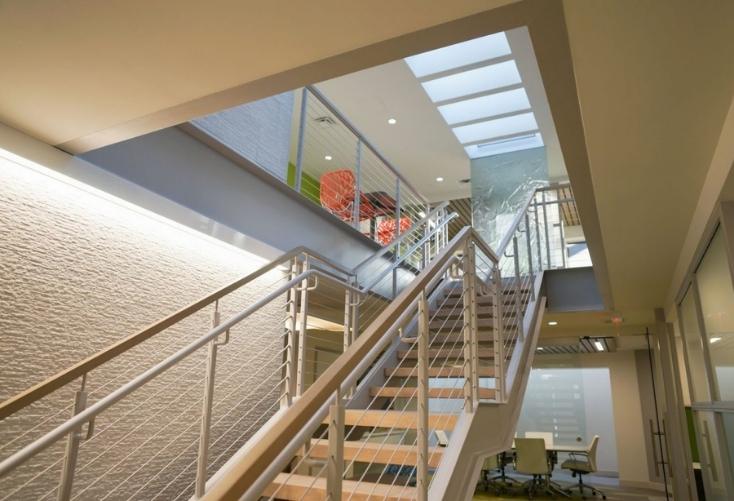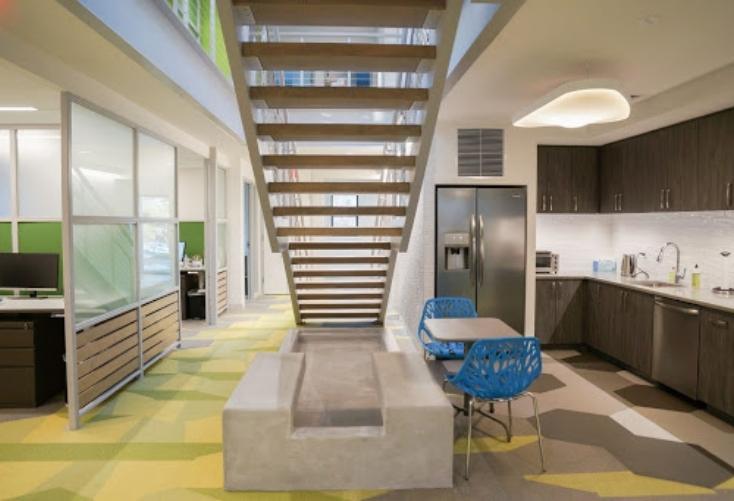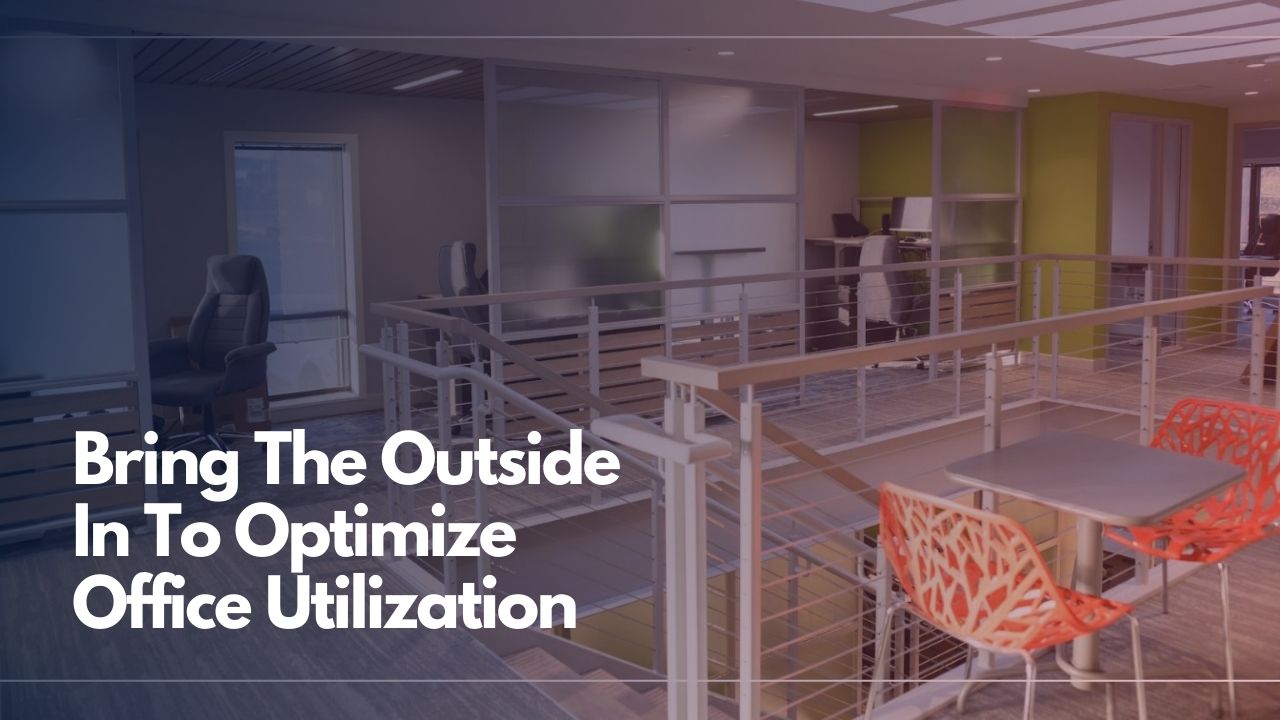- Every office can enjoy the benefits of nature at work, and it doesn’t need to be an expensive reinvention.
- Start by focusing on quick wins, such as better lighting, better air quality, and the introduction of biophilia.
- Don’t try to reinvent the office in a silo; collaborate across departments and consider every opinion.
This article was originally published on Work Design Magazine by Hanna Graziano of FM:Systems and Lisa Layman of Eighth Day Design.
Walk into most large federal government offices designed in the 1990’s and you’ll see… not a whole lot.
For those whose mission requires quiet and focused work, spaces still exist today that are primarily enclosed offices, both on the interior and perimeter of the space. The more senior an employee, the better their access to space, comfort, and natural light. Workrooms and pantries are also largely buried in the interior core of the building with no access to daylight.
When COVID struck, these heads-down workers started doing all this work at home. Instead of isolated offices, they reviewed documents wherever they did their best work. Now, as offices reopen, spending a full day in such a structured, artificial environment isn’t quite as appealing.
But that’s all changing now.
A recent example is the redesign of a government agency with a two-fold goal. The first goal is to create a more visually appealing workspace. The second is to foster productivity and support a better employee experience. The redesign reduces private office space to introduce far more (and more accessible) natural light for everyone. Since natural light boosts productivity and creativity, and reduces stress, this change will do a lot more than cut down on lighting costs.
But bringing the outdoors in goes well beyond lighting.
Another example is a wealth management company who wanted to recreate a “beach house” vibe in a new space. The moldy, drab, long-empty brick structure was ready for reinvention. They added more open areas, new skylight features, natural wood decor, a natural color palette, and even a water feature to bring the outside world in. Clients feel at ease in the space and it provides a welcoming and enjoyable environment for employees to return to every day.

These examples are part of a new movement to bring more outside elements to the indoor office. It’s driven by two key factors. The first is the fallout from the pandemic. The second is more collaboration between facilities managers and HR teams in response. Poor air quality and unhealthy conditions contribute to the spread of illness and harm productivity. Bringing the outside in helps fix this in many ways.
To help the return to work, organizations must create spaces that are appealing to work in. This means they are modern, safe, bright, and designed to fit the needs of their workforce. A well-built office will move from a perk to a must as companies work to keep talent and stay competitive.
No initiative is too small
Of course, not everyone can have a private outdoor patio or rooftop garden. And making big changes to traditional workplaces is hard. But every office can enjoy the benefits of nature at work.
So, start by making small improvements piece by piece. Over time, they will add up to tremendous gains in many key performance metrics.
Start by focusing on quick wins.
Look into better lighting, better air quality, and the introduction of biophilia. From there, options such as environmental sensors become attractive. They help identify areas of opportunity and track the impact of current initiatives.
Here’s how you can start enjoying these benefits, too.

Ideas for Bringing the Outside In
Start by reevaluating the types of space you provide to employees.
In a hybrid work model, collaborative space is the priority. Subdivide large, underused spaces. Open your space to have more natural light and better airflow. Ensure your spaces support social distance. Maximize your use of efficient indoor lighting. Allow employees to book space where and when they want based on their needs for any given day.
Artificial plants add greenery and help aesthetics but do nothing for air quality. Adding live plants around the facility requires a lot of resources to manage and nurture. Consider hardy ground covers such as mosses and lichen to cover walls. They need near-zero maintenance, and even provide acoustic benefits.
And of course, ditch the cube-based assigned seating.
How to get started
Don’t try to reinvent the office in a silo. The larger the organization, the more collaboration it will need across departments. There will be a lot of opinions and you should consider each of them.
Remind your teams that the goal is not perfection but improvement. Find ways to measure the improvement to continue gaining support throughout the organization. Run internal surveys to see what your people want. Learn what they’d use most, and what would actually get them to come into the office more often.
This all comes down to being a data-driven and employee-experience-driven organization. Use data to back your strategic decisions. Data allows you to design spaces that fit your workforce’s needs and standards. You also need to test the effectiveness of these changes in real time. Do this with sensors that track wellness and efficiency metrics such as employee density and space utilization.
Survey, test, and optimize these “outside-in” projects to create and maintain a healthy work environment.
Follow these tips to instil confidence in employees that they’re safe. At the same time, you’ll give them more reasons to use the space you’re paying for. Over time, these considerations will benefit both your bottom line and your mindset of working in the office.


 Dr. Gleb Tsipursky – The Office Whisperer
Dr. Gleb Tsipursky – The Office Whisperer Nirit Cohen – WorkFutures
Nirit Cohen – WorkFutures Angela Howard – Culture Expert
Angela Howard – Culture Expert Drew Jones – Design & Innovation
Drew Jones – Design & Innovation Jonathan Price – CRE & Flex Expert
Jonathan Price – CRE & Flex Expert













